Image Archive






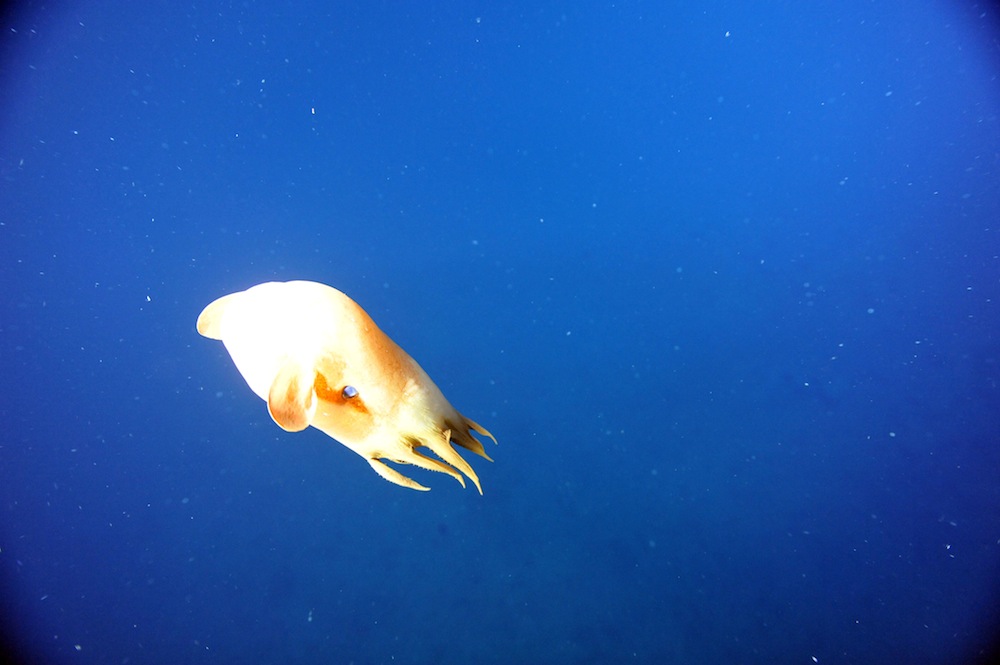

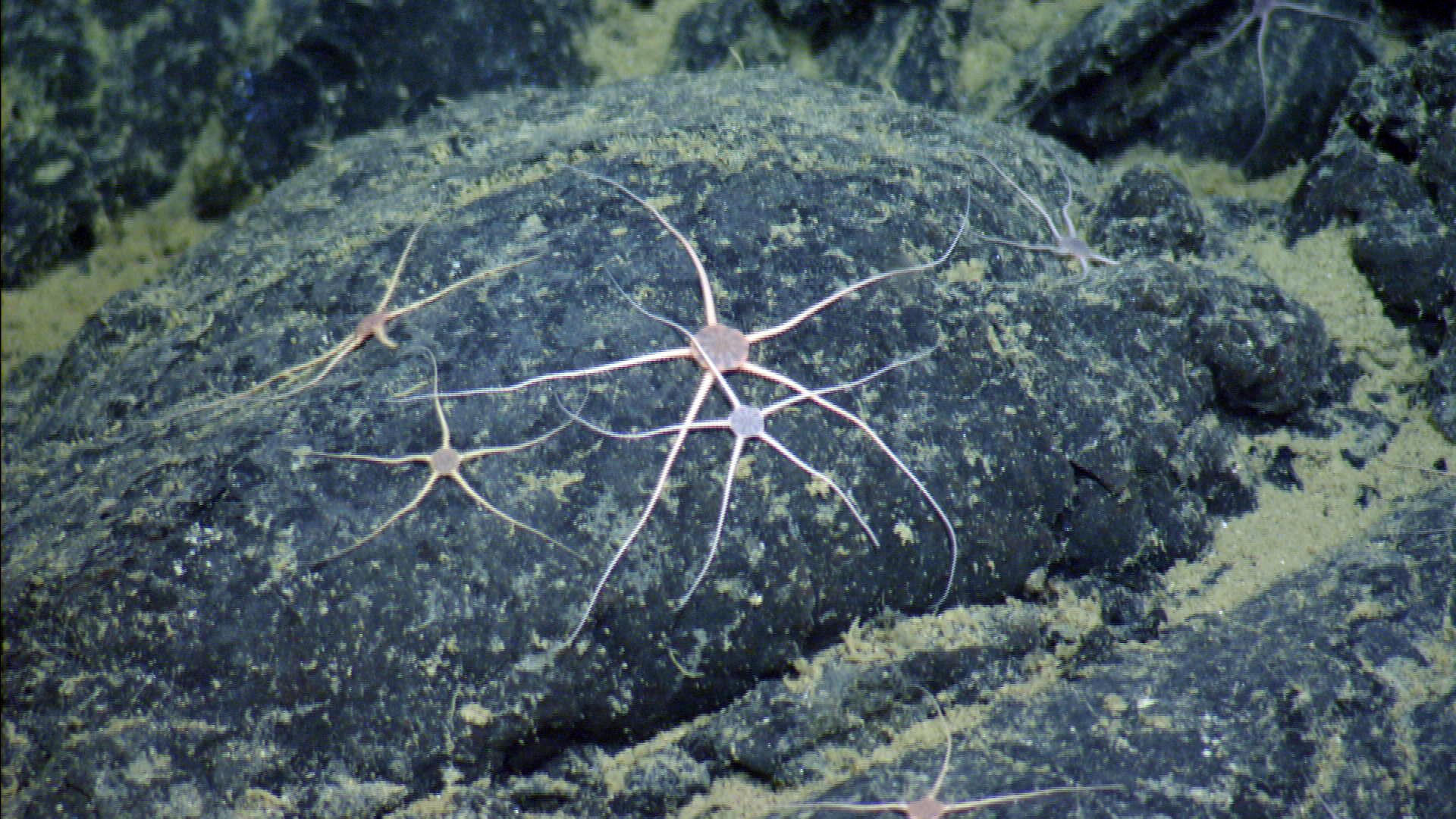







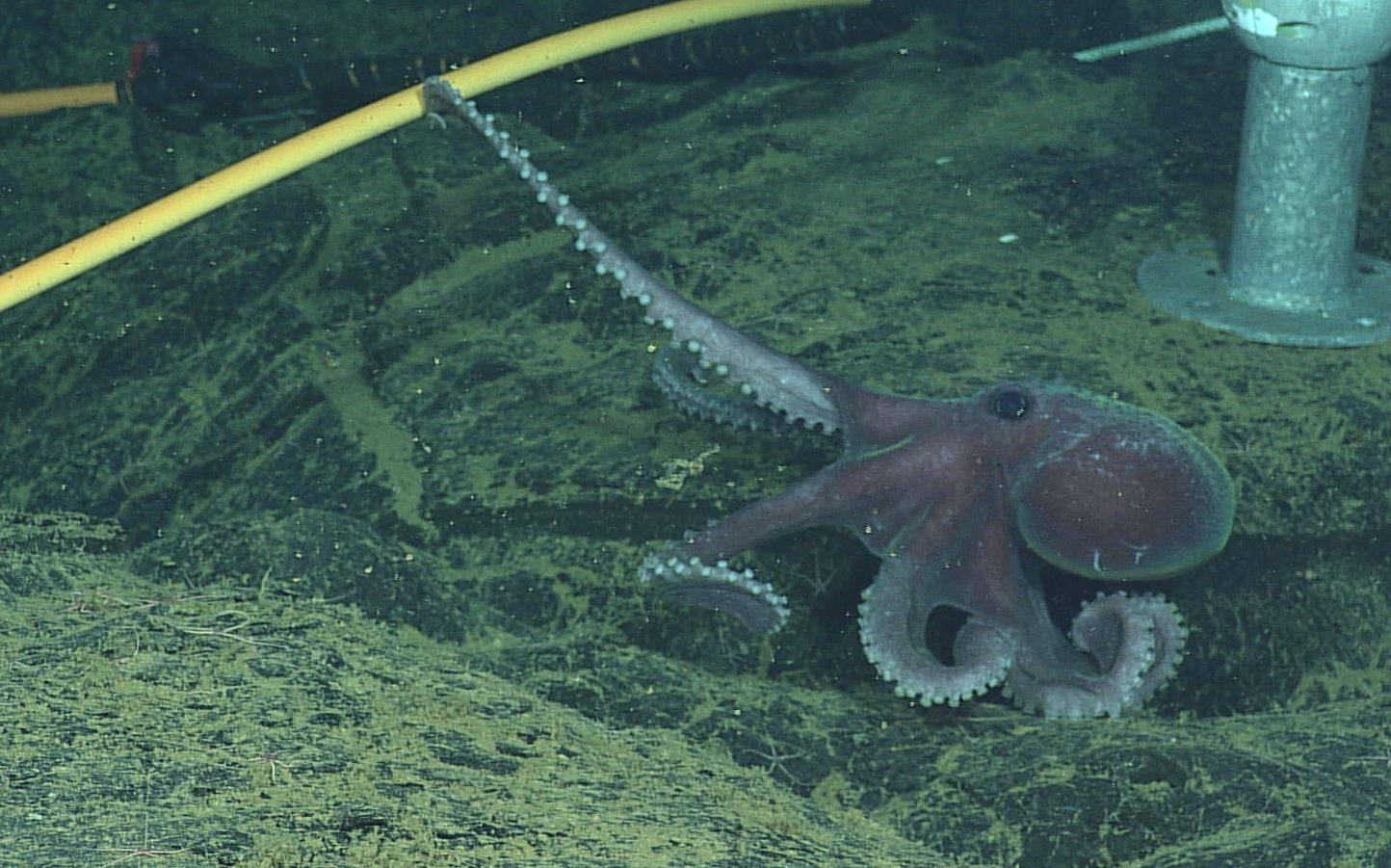




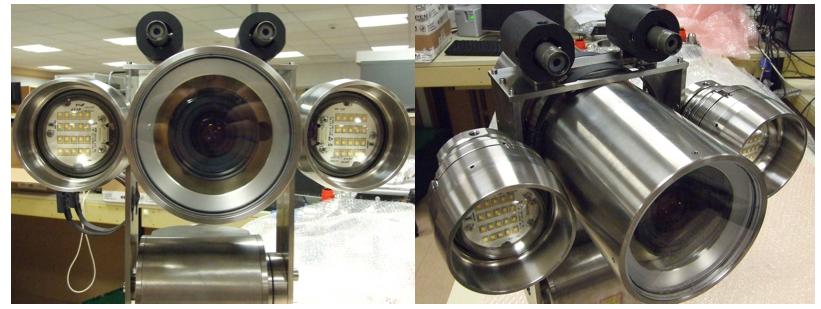





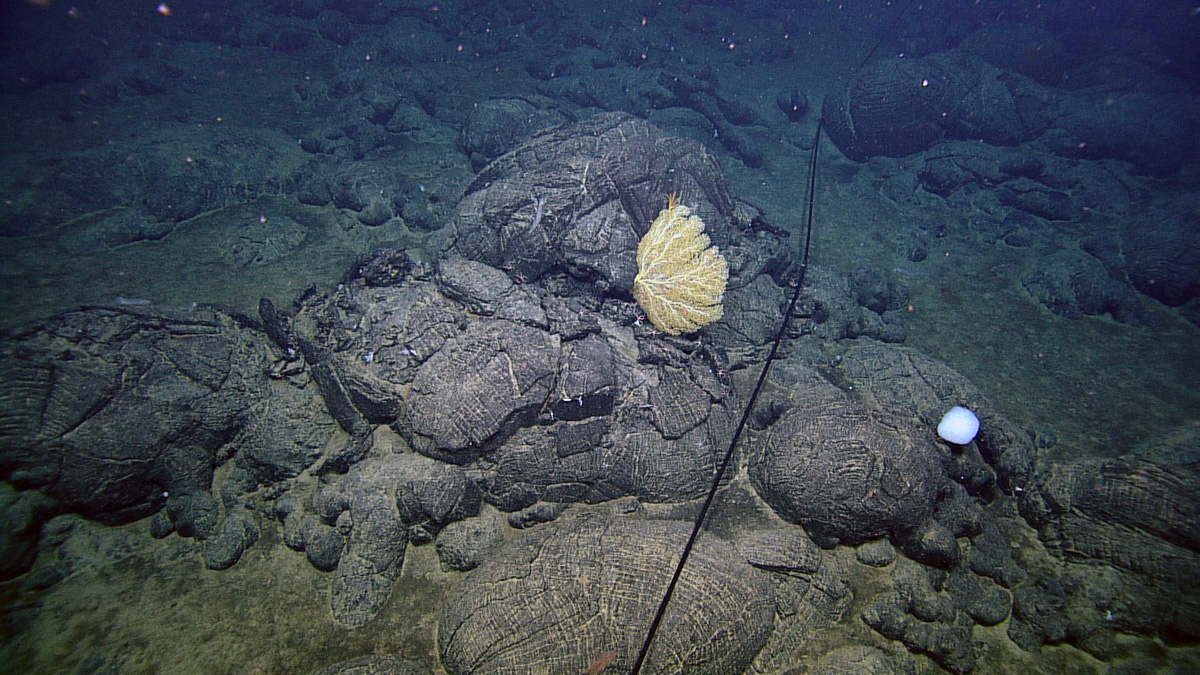

The anhydrite chimney 'Diva' visited with the ROV ROPOS during the VISIONS'14 program. This is an extremely CO2-rich vent with temperatures measured at 294°C (561°F) in July.

The top of the 16-m tall El Guapo edifice that emits boiling fluids. Credit: UW/NSF-OOI/CSSF; ROPOS Dive R1713; V14.

Beautiful blue ciliates (protists) line the base of the hydrothermal vent called El Gordo. Credit: UW/NSF-OOI/CSSF; ROPOS Dive R1713; V14

A beautiful sea urchin sits on a young lava flow at the summit of Axial Seamount. Photo Credit: NSF-OOI/UW/CSSF; Dive R1712; V14.

A red jellyfish swims 5000 ft beneath the ocean's surface at Axial Seamount on the Juan de Fuca Ridge. Here, most animals swim slowly to conserve energy in the nearly freezing seawater. Photo credit: NSF-OOI/UW/CSSF; Dive R1712; V14.

During the VISIONS'13 Expedition, three subnets were completed at this site (highlighted in blue). They include: 1) a medium-powered J-box MJ03B in the ASHES hydrothermal field, which is connected to two short-period seismometers; 2) an HD camera also in the ASHES hydrothermal field; and 3) a medium powered J-box MJ03E connected to two short-period seismometers. Over 20 km of extension cables, with lengths up to ~ 5 km, were successfully installed in 2013 using the ROV ROPOS. All extension cables and subnets were fully tested and are functional, awaiting to be connected to Primary Node PN3B. The remaining infrastructure will be deployed in during VISIONS'14, next year.

A Dumbo Octopus spotted during ROV ROPOS dive R1465. Credit: UW/OOI-NSF/CSSF, ROPOS Dive R1465, V13.

A Deep-Sea Cucumber (Holothurian) is shown with brittle stars and a seastar on a lobate flow on Axial Volcano. This is likely the species Pannychia moseleyi. Photo credit: NSF-OOI/UW/CSSF; V13

Brittle stars of the species Spinophiura jolliveti are very abundant on all the lava rocks at Axial Seamount within the caldera. Photo credit: NSF-OOI/UW/CSSF.

A large Fried Egg Jellyfish (Phacellophora cantschatica) hugs the basalts along the floor of Axial Seamount. The jellyfish is likely a 'fried egg' jelly. Credit: UW/NSF-OOI/CSSF; ROPOS Dive R1635, V11.

Deep Sea Skate sketch, drawn by Montgomery Taylor, a College of Charleston undergraduate student who participated on Leg 3 of VISIONS '13.

Battery-operated thermistor array. VISIONS '13, Leg 3. Photo by Ryan Cox.

A small Flapjack octopus sits atop a lobate flow at the summit of Axial Seamount - water depth ~ 1500 m (nearly 5000 feet beneath the surface). Credit: UW/OOI-NSF/CSSF, V13.

Graneledone Octopus on lava dlows at the summit of Axial Seamount. Credit: UW/OOI-NSF/CSSF, ROPOS Dive R1617, V13.

Graneledone Octopus on a ledge near the hydrothermal vent Escargot at Axial Seamount. Credit: UW/NSF-OOI/CSSF, ROPOS Dive R1608, V13.

Graneledone Octopus close-up on lava flows at Axial Seamount. Credit: UW/NSF-OOI/CSSF; V13.

Graneledone Octopus investigates a junction box at the base of Axial Seamount (~2600 m). Credit: UW/NSF-OOI/CSSF, V13.

This octopus, nicknamed the Flapjack Octopus, on pillow basalts at the summit of Axial's Eastern caldera. Credit: UW/OOI-NSF/CSSF, ROPOS Dive R1608, V13.

A Deep Sea Skate slowly swims by at the summit of Axial Seamount, 5000 ft beneath the ocean's surface. A small spider crab sits atop an old lava flow to the left of the skate. Credit: UW/NSF-OOI/CSSF; V13.

A Roughtail skate slowly swims by during ROV operations at the base of Axial Volcano. Photo credit: NSF-OOI/UW/CSSF; V13.

Brittle stars (Ophiuroids) are very common in the sediments at the base of Axial Seamount, 2609 meters deep. (credit: NSF-OOI/US/CSSF)

The digital still camera (with pan/tilt and LED lights) will be positioned at the International District in Axial volcano's caldera.

Sulfide blocks the size of small cars at the base of the > 40 m tall sulfide edifice provide hints of active hydrothermal sites above.

A close up view fo the edge of a snowblower vent billowing microbes and microbial produced material from the subseafloor. The biologically produced material and filamentous colonies of single-celled organisms coat the side and walls of a small collapse pit. Credit: UW/NSF-OOI/CSSF; ROPOS Dive R1472; V11.

A Flathead Sculpin (Psychrolutes phrictus) hovers in the caldera at Axial Seamount at a water depth of nearly 5000 feet beneath the ocean's surface. Credit: UW/NSF-OOI/CSSF; ROPOS Dive R1470; V11.

Thick flow wrapped by the April eruption on the eastern wall of the caldera. Credit: UW/NSF-OOI/CSSF; V11.

This Flapjack Octopus floated gently above the seafloor for several minutes as we watched it through the eyes of the ROV ROPOS. Credit: UW/OOI-NSF/CSSF, V11.

Pillow basalts, interspersed with sediment ponds, mark old lava flows on the flanks of Axial Seamount. The rocks and sediment are host to occasional deep sea corals.
- Anemone
- Animal
- Arthropod
- ASHES
- Axial
- Axial Base
- Axial Biology
- Axial Caldera
- Bacteria
- Basalt Lava
- BEP
- Biofouling
- biolgoy
- Biology
- Camds
- Camera
- Camhd
- Central Caldera
- Ciliates
- Cnidaria
- Coastal Biology
- Crab
- Deep Profiler Mooring
- Dive Highlights
- Eastern Caldera
- Echinoderms
- Endurance Array
- Engineering Team
- ENLIGHTEN 10
- Exploratorium
- Fish
- Geology
- HD Camera
- HPIES
- Hydrate Ridge
- Hydrates
- Hydrophone
- Hydrothermal Vents
- Illustration
- Inshore 80 Meters
- Instrument
- International District
- J-BOX
- Jason
- Jellyfish
- Junction Box
- K12
- Lava
- Mollusk
- Moorings
- Nodes
- Nudibranch
- Octopus
- OOI
- Oregon Offshore
- Oregon Offshore 600 m
- Oregon Shelf
- Oregon Slope Base
- People
- PN1B
- PN1D
- Polychaetes
- PPSDN
- Primary Node
- RASFL
- ROCLS
- ROPOS
- ROPOS Dives
- ROV Team
- RV Revelle
- RV Sikuliaq
- RV Thompson
- Salp
- Sample
- SC13
- Science Team
- Sea Cucumber
- Sea Star
- Sea Urchin
- Seafloor
- Seismometer
- Sensors
- Shallow Profiler Mooring
- Shark
- Shipboard
- Shore Station
- Slope Base
- Smoker
- Soft Coral
- Southern Hydrate Ridge
- Sponge
- Squid
- Students
- Students & Guest Participants
- Tmpsf
- Tubeworms
- VISIONS 11 Leg 1
- VISIONS 11 Leg 2
- VISIONS 11 Viewers
- VISIONS 13
- VISIONS 14
- VISIONS 15
- VISIONS 16
- VISIONS 17
- VISIONS 18
- VISIONS 20
- VISIONS 22
- VISIONS 23
- Visualization
